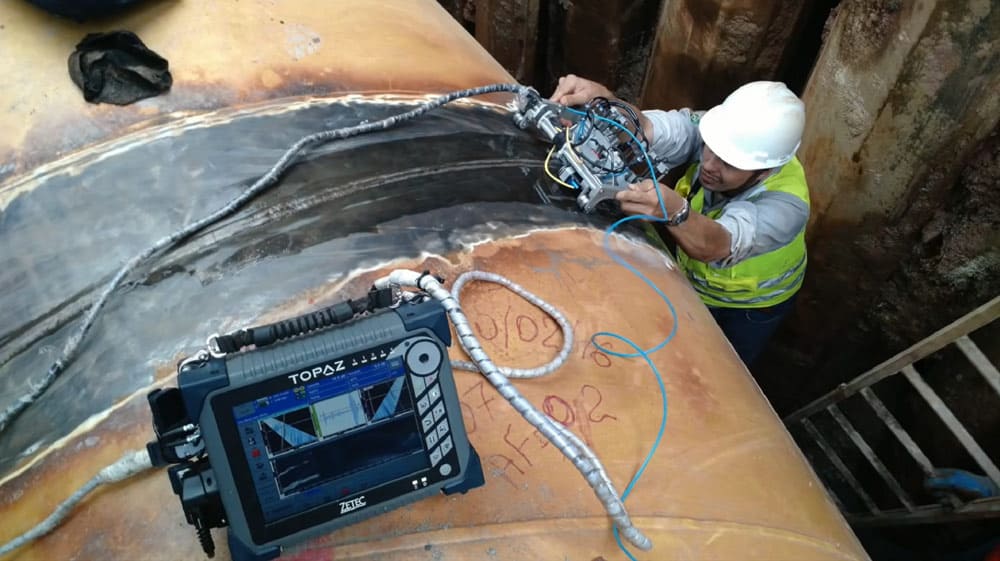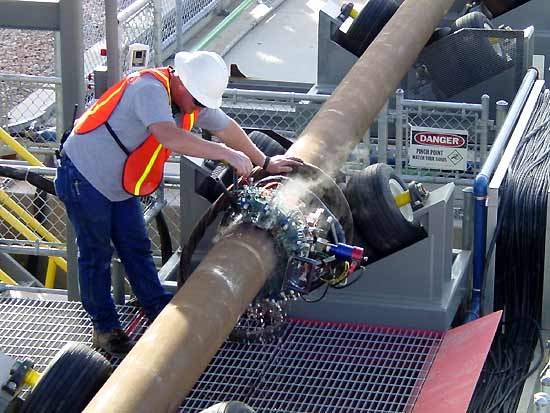Pipeline Welding Inspection: Expert Services for High-Quality Welds
Advanced Strategies in Pipeline Welding Assessment: Developments and Technologies for Boosted Accuracy and Reliability in Weld Assessment
The landscape of pipe welding evaluation is undertaking a considerable change, driven by sophisticated methods that assure to boost both accuracy and dependability in weld assessments. Advancements such as computerized evaluation systems and progressed imaging innovations are redefining standard practices, while non-destructive screening methods guarantee product honesty is kept. As these innovations advance, they not only raise flaw detection rates but likewise make it possible for more efficient maintenance methods. Nevertheless, the effects of these advancements prolong beyond immediate benefits, increasing essential questions about future methods and requirements in the market.

Value of Weld Evaluation
Guaranteeing the stability of pipe welds is important to the total safety and security and dependability of commercial systems. Welds serve as the structural foundation of pipelines, which carry a variety of fluids under varying pressures. Flaws in welding can bring about catastrophic failures, leading to not just considerable financial losses however likewise prospective environmental disasters and threats to public safety. For that reason, strenuous examination of welds is indispensable to the lifecycle of pipeline infrastructure.
The significance of weld evaluation prolongs past plain conformity with regulative requirements. It offers as a positive action to identify and correct blemishes, such as insufficient fusion, porosity, or cracks, prior to they escalate into severe problems. Effective inspection techniques additionally add to the durability of pipelines, lowering upkeep costs and enhancing operational performance.
Additionally, comprehensive weld inspections foster trust fund among stakeholders, consisting of regulative bodies, investors, and the neighborhoods offered by these pipes. By making sure that all welds satisfy the required requirements, companies can mitigate threats and support their online reputations. In recap, weld assessment is crucial not only for functional stability yet additionally for the broader effects it holds for security and environmental stewardship.
Automated Assessment Solutions
The integration of automatic examination systems in pipeline welding has actually transformed the strategy to guaranteeing weld high quality and integrity. These systems use advanced robotics and expert system to carry out examinations that are not only quicker but also more regular than standard methods. Automated systems can cover comprehensive sizes of pipes efficiently, catching information that human assessors could overlook because of tiredness or ecological problems.
Among the key advantages of automatic inspection systems is their capacity to run in unsafe environments, minimizing the threat to human assessors. They make use of numerous non-destructive screening (NDT) techniques, such as ultrasonic testing and magnetic particle inspection, to assess weld honesty without jeopardizing the framework. The data collected is processed in real-time, permitting instant feedback and prompt restorative actions when issues are recognized.
In addition, automated systems help with the standardization of inspection processes, making sure that each weld is examined against regular requirements. This not just enhances the reliability of outcomes yet also improves conformity with regulative criteria. As sectors continue to focus on safety and functional efficiency, the function of automated assessment systems in pipeline welding will unquestionably expand, leading the way for extra sophisticated quality control approaches.
Advanced Imaging Technologies
Regularly employed in contemporary pipeline welding assessments, progressed imaging innovations have actually considerably boosted the capability to identify and assess weld defects. Strategies such as digital radiography, calculated tomography, and thermographic imaging offer assessors with high-resolution images that reveal sub-surface defects and architectural variances that might be undetectable to the nude eye.
Digital radiography utilizes digital sensors to catch images, permitting prompt evaluation and boosted photo comparison. This causes faster examinations and improved precision in determining essential flaws. Computed tomography, best site on the various other hand, supplies three-dimensional imaging, allowing assessors to imagine intricate geometries and assess the honesty of welds from several angles - Pipeline Welding Inspection. This depth of analysis is indispensable for spotting concerns that traditional techniques might neglect.
Thermographic imaging uses infrared innovation to identify variants in temperature, determining areas of possible weakness or stress within the weld. These sophisticated imaging innovations not only enhance flaw detection prices however additionally minimize the moment and resources needed for pipe examinations. As a result, they play a critical role in keeping pipeline see this safety and security and reliability, making sure compliance with market standards while decreasing operational threats.
Non-Destructive Examining Approaches
Using various methods, non-destructive screening (NDT) techniques are necessary in pipe welding evaluations, permitting the assessment of weld honesty without jeopardizing the product's structural stability. NDT includes a variety of techniques, including ultrasonic testing (UT), radiographic screening (RT), magnetic particle screening (MT), and dye penetrant screening (PT) Each method has distinct advantages and applications relying on the particular demands of the assessment.
Ultrasonic testing utilizes high-frequency audio waves to discover internal flaws, offering specific measurements of weld density and honesty. Pipeline Welding Inspection. Radiographic screening utilizes X-rays or gamma rays to produce photos of the weld, revealing inner problems that might not be visible externally. Magnetic particle testing works for identifying surface and near-surface gaps in ferromagnetic materials, while color penetrant screening highlights surface area fractures by utilizing a colored color
Including these NDT methods right into pipeline welding examinations enhances the precision and dependability of weld evaluations, guaranteeing that prospective failings are recognized early. As industries demand greater requirements for safety and performance, the function of NDT in keeping the integrity of welded structures remains to be pivotal in pipeline building and upkeep.

Future Patterns in Weld Evaluation
As we want to the future of weld assessment, advancements in innovation are positioned to transform the methods utilized for evaluating pipe honesty. The assimilation of expert system (AI) and device learning in assessment processes is anticipated to improve the accuracy of imperfection detection and anticipating upkeep. These technologies enable click this link real-time data analysis, enabling examiners to determine prospective issues prior to they rise into considerable troubles.
In addition, the use of drones outfitted with advanced imaging systems is getting grip. These airborne inspections can cover substantial areas promptly, recording high-resolution images and data that can be assessed for defects in hard-to-reach places. This not only improves safety and security but also increases effectiveness in the inspection process.
Moreover, the development of clever sensing units installed in pipeline systems uses the possibility for continuous tracking. These sensing units can find modifications in stress, temperature, and vibrations, offering beneficial understandings right into the health of the welds gradually.

Conclusion
Finally, the combination of innovative techniques in pipe welding inspection dramatically boosts the accuracy and integrity of weld evaluations. Technologies such as automatic assessment systems, advanced imaging modern technologies, and non-destructive testing approaches play a vital role in boosting defect detection prices and cultivating aggressive upkeep strategies. As these modern technologies continue to evolve, they will additionally make certain the security and performance of pipe systems, eventually contributing to the integrity of vital framework.
